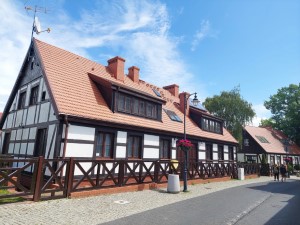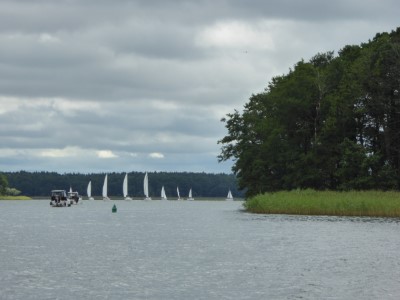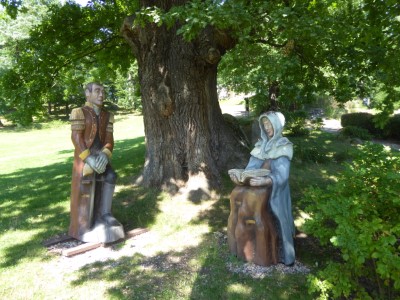
Poland 2023
Our recent visit to Poland marked a significant reunion after a four-year hiatus, attributed mainly to the
global challenges posed by Covid-19 and the subsequent travel restrictions. Living in New Zealand, our departure
from the island nation had been impeded for an extended period. However, the benevolence of Asia, who
resides in Gdynia, facilitated a five-month stay in Europe, making Poland our central hub for European
exploration.
During our time in Poland, reconnecting with family and friends took precedence. Exploring regions previously
untouched by our travels became a focal point of our itinerary. Gdynia served as our base, where we immersed
ourselves in the routine activities of daily life - shopping, dog walks, and brief excursions to picturesque
locales like Mechalinki, Oksywie Beach, Rewa Beach, Orłowo, Obłóże Beach, Sopot, Gdańsk, and the Hel Peninsula.
A notable aspect of our experience was the observable shift in the behavior of drivers and their attitudes
towards pedestrians. Gone are the days when pedestrians were seemingly fair game on the streets. Instead,
drivers now exhibit a commendable level of consideration, slowing down well in advance of pedestrian crossings
and allowing individuals to traverse without intimidation. This shift reflects a positive change, fostering a
safer and more pedestrian-friendly environment in the country.


















Czysta
Embarking on a journey to visit friends in Czysta, a picturesque village near Lake Gardno
in Poland, we
eagerly anticipated reconnecting with our Polish/Greek friends whom we hadn't seen since 2009. The
prospect of exploring a part of Poland unfamiliar to us only added to the excitement.
Our travel odyssey began with a train ride to Słupsk, followed by a scenic bus journey that delivered us to
the warm embrace of Czysta. The hospitality extended to us set the tone for a memorable stay. One of our
initial adventures took us to the historic Czołpino Lighthouse, an architectural gem
constructed in 1875.
This cylindrical brick tower, standing at 25.2 meters with a balcony and lantern, mesmerized us with its
maritime history, boasting a focal height of 75 meters and a visible range of 12 nautical miles.
Venturing further, we explored Ustka, a spa town renowned for its pristine beaches and the
intriguing
unfinished pier. Ustka's rich history, dating back to the 9th century, added depth to our cultural
immersion.
Our itinerary unfolded to reveal the luxurious Dolina Charlotty resort, nestled amid nature
with a lake and
forest in proximity. The resort's cultural significance resonated, particularly during the annual Rock
Legends Festival, featuring iconic musicians from around the globe.
The exploration continued with a visit to Rowokół, the highest rise of the Słowińskie
Coast, and the Museum
of Slovinic Countryside in Kluki. The meticulously recreated 19th-century Slovinic fishing
village
transported us back in time, offering an authentic glimpse into the local culture.
Our final day was spent traversing Wydma Chłopińska, a captivating sand dune within the
Słowiński National
Park. Standing at approximately 42 meters, this dynamic dune, shaped by wind and weather conditions,
showcased the wonders of nature.
In summary, our sojourn in Czysta blended warm reunions with cultural exploration, creating a harmonious
tapestry of friendship and discovery.
Mazury
Setting sail on a spontaneous week-long journey through the enchanting Mazury Lakes was a
decision sparked by our nephew&s recommendation. The allure of navigating the serene waters in a Calipso
750, a motorboat
equipped with 6 bunks and requiring no navigation licenses, was too enticing to resist. Jakub, our generous
guide, facilitated our journey by driving us to Węgorzewo, where we stocked up on supplies before immersing
ourselves in the fundamentals of sailing.
Our initial foray into the Mazury Lakes was not without its challenges. A sudden gust of wind near Węgorzewo
sent one of the deck mattresses adrift, prompting a comical chase and multiple turning maneuvers before we
successfully retrieved it. Yet, this incident proved to be a valuable lesson, preparing the three of us
(Asia, Fiona and myself) for the uncertainties that lay ahead.
Over the course of five days, we sailed through Mamry Lake, Śniadrwy Lake, and a network of interconnected
lakes, including Tałty, Jagodne, Niegocin, Kisjano, and Dargin Lake. Each port where we moored for the night
presented a different method of berthing, but the camaraderie among fellow boaters and harbor employees
ensured a helping hand was always available, be it in mooring, refueling, or addressing less glamorous
tasks.
As we navigated the waterways, the rhythm of our days emerged: sailing under the warmth of the sun and
finding refuge in a port as evening descended. The last leg of our aquatic adventure was shared with cousins
Magda and Tomek, adding a familial touch to the experience. Together, we explored Łabędzi Ostrów and
Kietlice, relishing delightful meals and drinks while engaging in conversations that traversed a spectrum of
topics.












Karpniki
Our journey to the Karkonosze region was a delightful blend of historical exploration and natural beauty.
Beginning our adventure with a train ride from Gdynia to Bydgoszcz, we eagerly anticipated the experiences
that awaited us. The following day, accompanied by Cathryn and Leszek, we set off for Karpniki, where the
picturesque Karpnicki Młyn Apartments awaited us,
already occupied by our friends Bogdan and Jane.
A short stroll to Fischbach Castle, also known as Karpniki Castle, revealed its intriguing
history dating back to the 13th century. The castle, initially a fortress, underwent architectural
transformations over the
years, adding layers of historical significance to its stone walls.
The subsequent day's expedition led us to Karkonoski Park Narodowy, where a walk to
Zamek Chojnik immersed us in the medieval charm of a castle with a rich past. Originally
constructed in the 13th century, the castle evolved through time, serving both defensive and recreational
purposes.
A visit to Karpacz afforded us the opportunity to explore the Wang Church,
a stave church with roots tracing back to 1200 in Norway. Its relocation to its current site in 1842 added a
unique chapter to its history.
The cable car ride and mountain shelter stroll beneath Mount Śnieżka provided a
breathtaking perspective, with the lunch spot seemingly straddling the border of the Czech Republic.
The exploration continued with a visit to Książ Castle, a grand edifice with a history
dating to the late 13th century. Its perch overlooking the Pełcznica river gorge added a touch of drama to
the castle's rich
tapestry of unsolved mysteries.
As our journey concluded with a leisurely stroll around Grodno Castle, the evening meals
and conversations resonated with memories of shared experiences, evoking the joys of parenting young
children in New Zealand.
The Karkonosze region, with its blend of history, nature, and camaraderie, left an indelible mark on our
collective reminiscences.